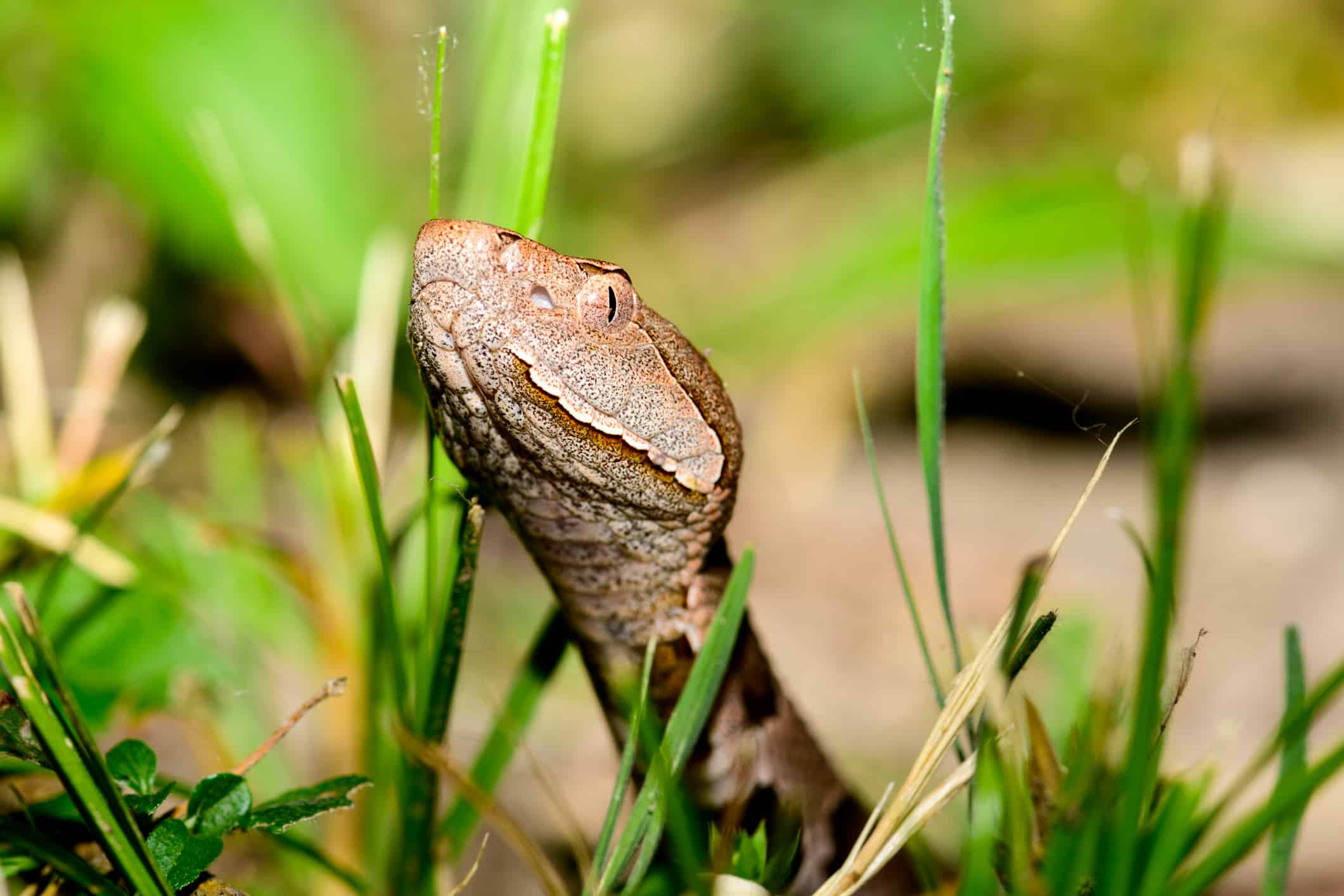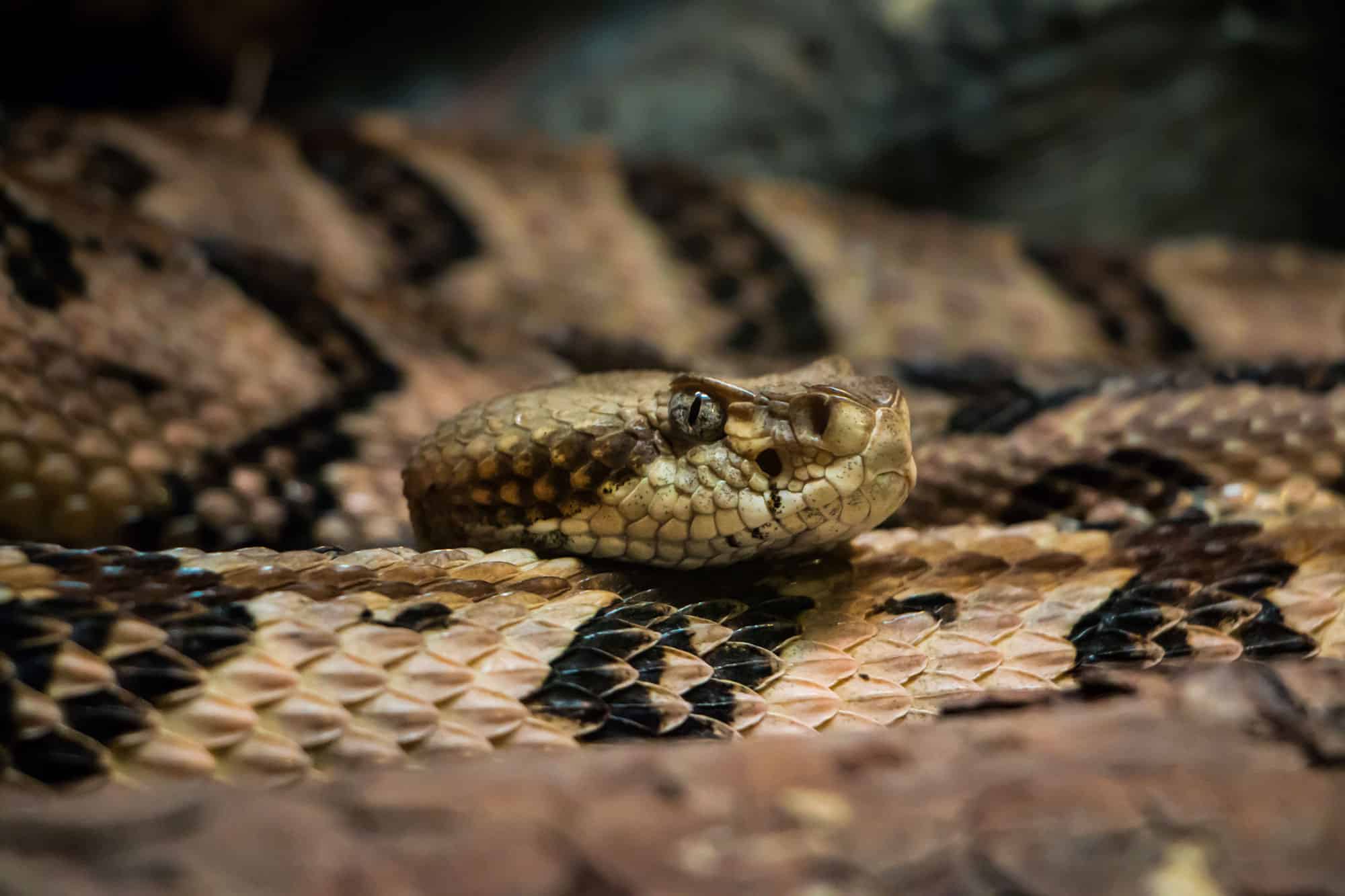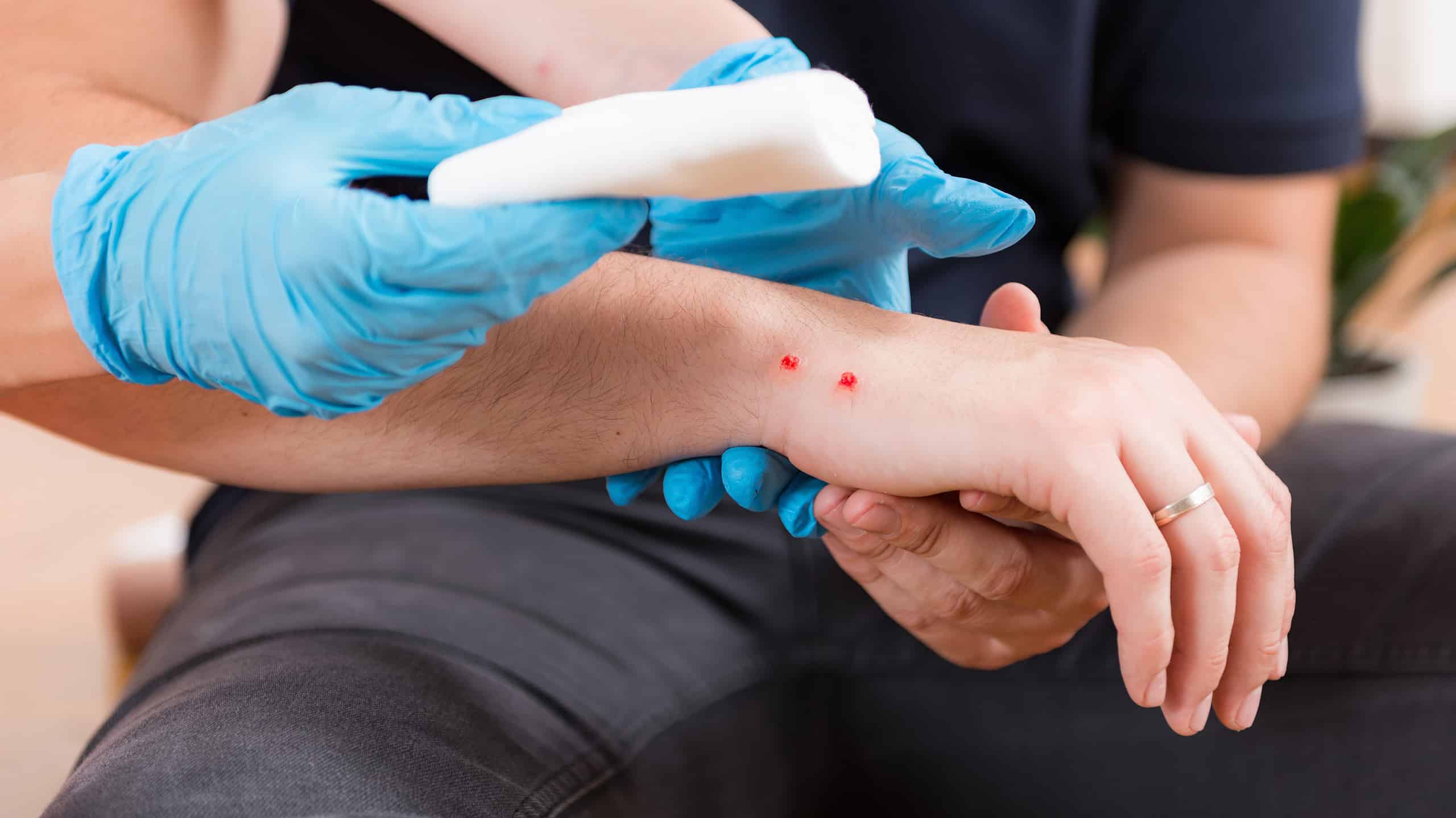The state of Missouri is home to 49 species and subspecies of snakes. Most of Missouri’s snakes are harmless. They even help out humans by eating pests such as insects and mice. However, a handful of venomous snakes also live in the state.
Luckily, fatal snakebites in Missouri are rare. Let’s dive into a few notable snake bite incidents in Missouri this year, and how you can prevent a snake bite from happening.
Venomous Snakes in Missouri
Before we dive into Missouri’s most notable snake bites this year, let’s explore the state’s six venomous species, according to the Missouri Department of Conservation.
Eastern Copperhead (Agkistrodon contortrix)
The most common venomous snake in Missouri is the eastern copperhead. Located pretty much throughout the state, eastern copperheads enjoy rocky hillsides and the edges of forests. They can also be found in trees and brush along prairie streams.
Eastern copperheads vary in color from grayish-brown to pinkish-tan. They also have an hourglass-shaped pattern of dark gray, brown, or reddish-brown.
Some specimens may feature pink or orange coloring on their head, hence the name. Eastern copperheads typically measure from 24 to 36 inches (61-91 cm). Their venom is weaker than some venomous snakes but still requires immediate medical attention.

Eastern copperheads are the most common venomous snake in Missouri.
©iStock.com/JWJarrett
Northern Cottonmouth (Agkistrodon piscivorus)
Northern cottonmouths, also known as water mocassins, are semi-aquatic snakes found in two Missouri habitats: the swamps and oxbow lakes of southeastern Missouri and the rocky streams and river sloughs of the southern Ozarks.
These snakes are typically black with no distinctive pattern. Northern cottonmouths get their name from the cotton white lining inside their mouths. These snakes are especially dangerous and can deliver a fatal bite.
Timber Rattlesnake (Crotalus horridus)
Timber rattlesnakes are distributed throughout Missouri and typically live on rocky, wooded hillsides. They are generally tan in color with dark brown markings on their back. Due to this, timber rattlesnakes blend in well to their preferred environment.
Timber rattlesnakes are the largest venomous snake in Missouri. They have a large rattle at the end of their tails and will bite if harassed.

Timber rattlesnakes prefer dry, wooded hill places where they prey on a variety of small warm-blooded animals.
©Dennis Riabchenko/Shutterstock.com
Eastern Massasauga/Praire Massasauga (Sistrurus catenatus/Sistrurus tergeminus tergeminus)
Though both of these venomous snakes have appeared in Missouri, most locals likely don’t need to worry about them. The eastern massasauga is likely extirpated from the state, as it has not been seen in Missouri for many years.
Prairie Massasuagas are endangered in the state of Missouri. They typically only occur in the north-central and northwestern corners of the state.
Western pygmy rattlesnake (Sistrurus miliarius streckeri)
Missouri’s final venomous snake, the western pygmy rattlesnake, is one of the smallest species of rattlesnake in North America. They make their home in counties bordering Arkansas and the eastern Missouri Ozarks.
These snakes slither under rocks on glades and woodlands. They are generally light grayish brown with small dark spots. Bites from pygmy rattlesnakes require medical attention though these snakes are so secretive that most Missourians probably won’t encounter them.
Notable Snake Bite Incidents
Missouri ranks eighth for the state with the most snake bite incidents. The state averages 234 snake bites per year, according to the World Population Review. Thankfully it appears that none of the bites from 2023 were fatal. A few incidents did make the news.
June 2023
Though there isn’t one specific incident to report, snake bites went up considerably in Missouri in the summer of 2023. According to a report from Public News Service forty-five snake bites were reported in the month of June.
Copperheads caused eighteen of those bites. The increase in snake activity likely occurred as a byproduct of heavy rains in Missouri earlier this year. Thankfully none of the snake bites caused any deaths.

Snake bites should always receive medical attention.
©Microgen/Shutterstock.com
What to Do if You See a Venomous Snake
The best thing to do if you see a venomous snake is to move away from it carefully and quietly. Avoid stepping over snakes in your path and never attempt to handle them.
Julie Weber, director of the Missouri Poison Control Center, told Public News Service that the two most common ways Missourians get bit is from trying to handle snakes or from accidentally stepping on them. Weber recommends using a walking stick when hiking, wearing protective boots, and making noise.
What to Do if You Are Bitten by a Venomous Snake
Venomous snake bites should always receive medical attention. Weber further recommends noting the time of the bite and removing all jewelry, as bites can cause swelling. You should then call the poison control center and head to the nearest hospital.
The photo featured at the top of this post is © Ryan M. Bolton/Shutterstock.com
Discover the "Monster" Snake 5X Bigger than an Anaconda
Every day A-Z Animals sends out some of the most incredible facts in the world from our free newsletter. Want to discover the 10 most beautiful snakes in the world, a "snake island" where you're never more than 3 feet from danger, or a "monster" snake 5X larger than an anaconda? Then sign up right now and you'll start receiving our daily newsletter absolutely free.
Thank you for reading! Have some feedback for us? Contact the AZ Animals editorial team.







